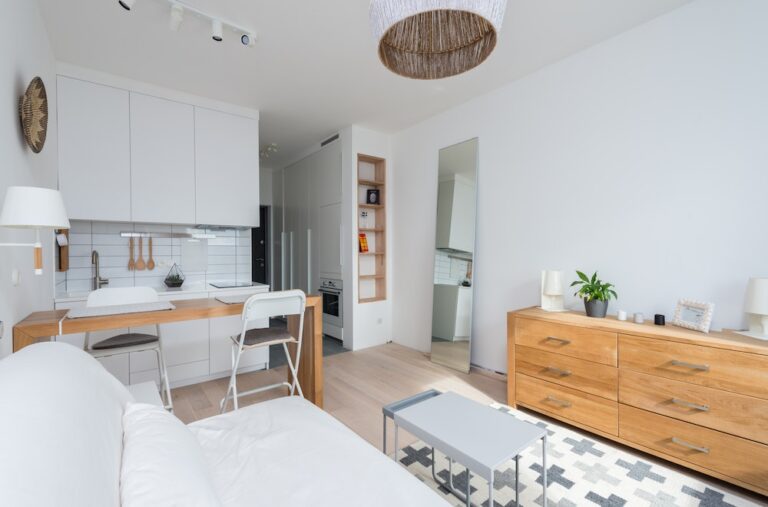Buying a home is often the biggest financial decision a person will ever make. A home may attract plenty of showings, but if buyers leave with doubts, it stays on the market longer than expected.
In markets where competition is growing, the difference between a “maybe” and a “yes” often comes down to preparation and presentation. Sellers who can anticipate buyer concerns and remove uncertainty are more likely to secure quick and confident offers.
The process is not about exaggeration or hard selling. Instead, it is about providing clear information, showing value, and creating trust. The following strategies will help sellers transform hesitant buyers into homeowners who are ready to sign.
Highlight the Home’s Strongest Features
Buyers want to see what makes a property worth their investment. It could be an open floor plan, updated appliances, natural light, or a backyard suited for family gatherings. These features should not only be pointed out but also framed in a way that helps buyers imagine themselves using them.
For example, if a home has new energy-efficient windows, sellers should explain how this helps reduce monthly utility bills. If there is an extra storage room, sellers can highlight its usefulness for hobbies, seasonal items, or home offices. By focusing on specific, tangible benefits rather than broad claims like “great space” or “modern upgrades,” sellers give buyers concrete reasons to feel confident about the home’s value.
Upgrade the Bathroom and Kitchen
When buyers evaluate a home, bathrooms and kitchens often carry the most weight. These are high-use spaces, and outdated designs can quickly turn enthusiasm into hesitation. Even small upgrades, like replacing faucets, adding modern hardware, or re-tiling, can transform how buyers perceive the home.
For larger changes, many sellers work with bathroom remodelers in Tampa to give outdated bathrooms a clean, modern look. Kitchens benefit from similar improvements—updated countertops, refreshed cabinets, or new appliances can dramatically increase buyer confidence. By investing in these key areas, sellers not only improve the home’s appeal but also address two of the most common sources of buyer uncertainty.
Offer Flexible Viewing Options
Many buyers hesitate because they feel rushed during a showing. They want time to explore, ask questions, and picture themselves living in the home. Sellers who offer flexible viewing options reduce this pressure. Some buyers prefer attending open houses, while others want private tours at a pace that suits them. Virtual tours and video walk-throughs are also becoming standard, especially for long-distance buyers.
According to a report, homes with 3D or virtual tours receive 87% more views than those without. This shows how important flexibility is in today’s market. Offering multiple ways to view a property makes buyers feel accommodated and respected. The more comfortable buyers feel during the viewing process, the more likely they are to move from uncertain interest to serious commitment.
Be Clear About Costs and Savings
Financial uncertainty is one of the strongest reasons buyers hesitate. Even if they love a home, unclear costs can delay their decision. Sellers can ease this concern by being upfront about expenses. This includes providing information on property taxes, homeowners association fees, and average utility bills.
It also helps to point out potential savings. For instance, if a home has new insulation, energy-efficient appliances, or solar panels, sellers should explain how these reduce monthly bills.
According to the U.S. Department of Energy, energy-efficient homes can lower utility costs by up to 25%. Buyers who understand both the costs and savings feel more confident that the home fits their budget. Being open about costs clears up confusion and helps buyers understand if the home will stay affordable in the long run.
Showcase Neighborhood Perks Buyers Value
Many buyers hesitate not because of the home itself but because they are unsure about the neighborhood. They want to know if the area matches their lifestyle. Sellers can make this easier by highlighting local amenities and community strengths.
Schools, parks, grocery stores, and medical facilities are often top priorities for families. Younger buyers often prefer areas with dining, fitness centers, and good transport, while retirees usually want peaceful streets and close medical care. Providing details about local services, walkability, and commute times can help buyers see the neighborhood as a good fit.
Research supports this. Most buyers consider neighborhood quality just as important as the home itself. By promoting what the area has to offer, sellers make it easier for buyers to commit with confidence and improve their chances of selling their property.
Work with a Skilled Real Estate Agent
Even with preparation, many sellers find it difficult to answer every question or manage buyer concerns on their own. This is where a skilled real estate agent adds real value. An experienced agent knows how to guide buyers, present information clearly, and handle objections without pressure.
Agents also understand local market trends. They can explain why a home is priced fairly, highlight its strongest selling points, and reassure buyers who are comparing it to other properties. The National Association of Realtors reports that 88% of buyers use an agent during their purchase, showing how important this professional guidance is. A knowledgeable agent not only helps the seller but also gives buyers the confidence they need to finalize their decision.
Most buyers start with hesitation. They like the home but worry about hidden issues, unexpected costs, or whether it truly fits their lifestyle. Sellers who want faster and smoother sales must learn how to remove these doubts before they grow.
By showcasing strong features, being transparent, preparing the home for move-in readiness, and highlighting upgrades in key areas like kitchens and bathrooms, sellers create a clear sense of value. Flexible viewings, cost transparency, and neighborhood insights further reduce uncertainty. Anticipating buyer questions and working with a skilled agent complete the process.
Confidence is what turns a “maybe” into a “yes.” When buyers feel informed and reassured, they are more willing to commit. For sellers, this means fewer delays, stronger offers, and more successful closings.







